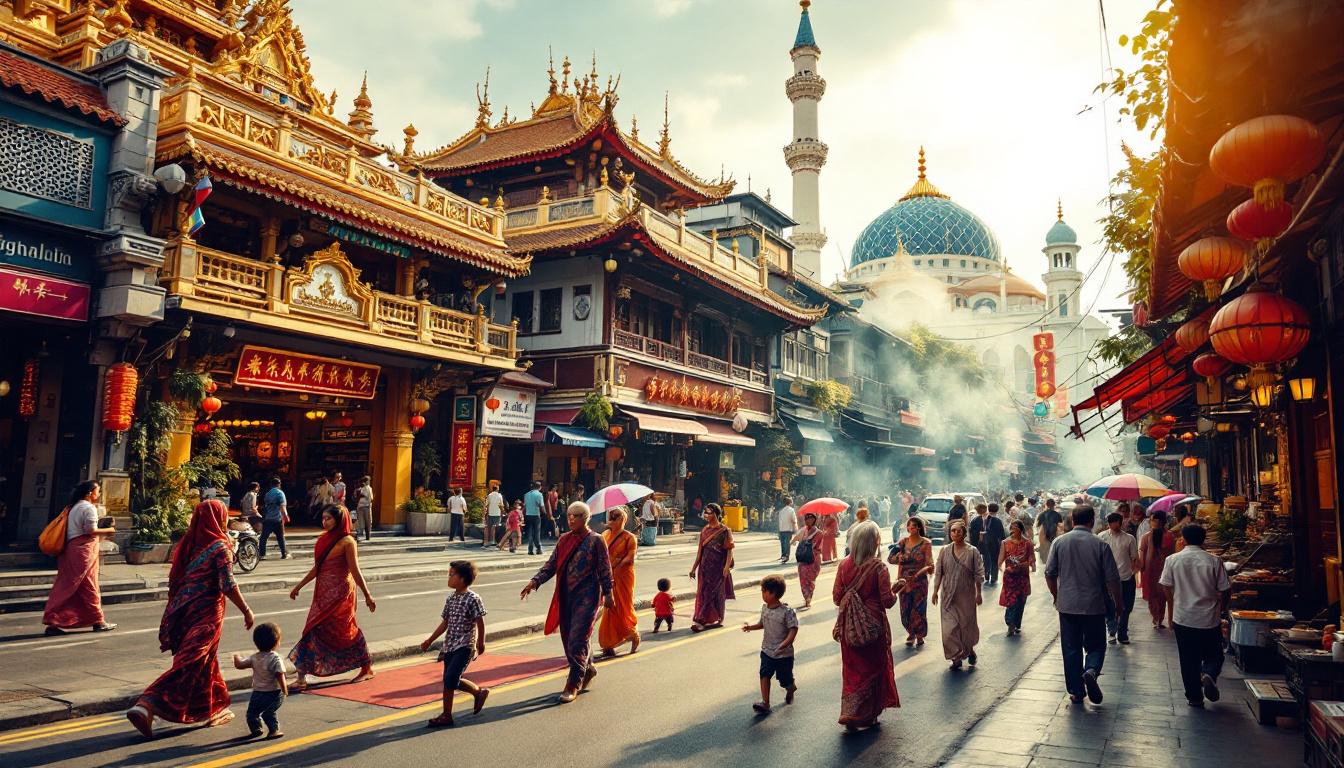The morning call to prayer echoes across glass towers while Tamil songs drift from Little India and the sizzle of wok hei fills Chinatown’s narrow lanes. This is what locals call “Asia’s crossroads” – a Malaysian capital where three ancient cultures converge in perfect harmony, offering travelers authentic experiences for just $35 per day.
Kuala Lumpur defies every stereotype of Southeast Asian capitals. While Bangkok drowns in tourist traps and Singapore sanitizes culture for mass consumption, KL (as locals lovingly call it) preserves authentic neighborhoods where Hindu temple bells, Islamic architecture, and Chinese heritage shophouses coexist within a 15-minute walk.
The secret lies in how KLites navigate their multicultural metropolis. They don’t see divisions – they see Malaysia’s living history unfolding in every street corner, from the Tamil coffee shops of Brickfields to the halal dim sum of Petaling Street.
The cultural triangle that locals protect
Brickfields: where Tamil culture thrives
Locals still call this area “Little India” with genuine pride, not tourist marketing. Every morning at 6 AM, Tamil devotional songs echo from Sri Kandaswamy Temple while vendors prepare fresh muruku and vadai for breakfast crowds. The authentic experience costs under $3 per meal – half what you’d pay in Singapore’s sanitized cultural districts.
Islamic heritage beyond the guidebooks
KLites navigate between Masjid Negara and the blue-tiled Federal Territory Mosque with reverent familiarity. During evening prayers, the architectural symphony of domes and minarets creates Malaysia’s most moving cultural moment. Entry remains free, but locals appreciate visitors who dress modestly and understand the spiritual significance beyond Instagram shots.
Chinese heritage that predates mass tourism
Petaling Street’s authentic rhythms
Forget the daytime tourist markets. Real Chinatown awakens at dawn when elderly uncles practice tai chi near Sin Sze Si Ya Temple, Malaysia’s oldest Taoist temple built in 1864. The morning dim sum costs $2-4 per basket while conversations flow in Hokkien, Cantonese, and Malaysian English.
Traditional shophouse culture
The narrow five-foot ways of Jalan Petaling shelter family businesses spanning four generations. Local herbalists still prepare traditional remedies while calligraphers create personalized scrolls. These aren’t tourist attractions – they’re living cultural institutions where Malaysian Chinese families maintain their heritage.
Why locals call it Asia’s crossroads
The Batu Caves pilgrimage experience
Every January, 1.5 million devotees climb the 272 colorful steps during Thaipusam festival. But locals know the caves’ spiritual power extends beyond festivals. The towering 140-foot golden statue of Lord Murugan welcomes visitors year-round, while limestone formations create natural cathedral acoustics for ancient prayers.
Halal street food fusion mastery
Malaysian Muslims created the world’s most sophisticated halal street food culture. Nasi lemak vendors near Kampung Baru serve coconut rice with sambal that balances Malay spices with Chinese wok techniques. Evening mamak stalls blend Indian flatbreads with local ingredients, creating dishes unavailable anywhere else globally.
The $35 daily budget that locals respect
Transportation and cultural access
The MRT system connects all cultural districts for $1-2 per ride. Walking between Little India and Chinatown takes 20 minutes through colonial architecture and modern Malaysia’s bustling streets. Temple visits remain free, while cultural performances at the Islamic Arts Museum cost just $3 admission.
Authentic dining without tourist markups
Local coffee shops serve teh tarik and roti canai for under $2, while elaborate banana leaf meals in Little India cost $5-8. Evening food courts offer Chinese roast duck, Malay curries, and Indian tandoor dishes at prices that make Singapore’s hawker centers seem overpriced.
Kuala Lumpur’s locals have created something unprecedented – a major capital where ancient cultures flourish authentically while embracing modernity. Unlike regional alternatives that choose between preservation and progress, KL balances both with genuine Malaysian harmony.
This crossroads continues evolving while honoring its multicultural soul. The $35 daily budget isn’t just about affordability – it’s about accessing authentic cultural experiences that money can’t buy in more commercialized destinations.
